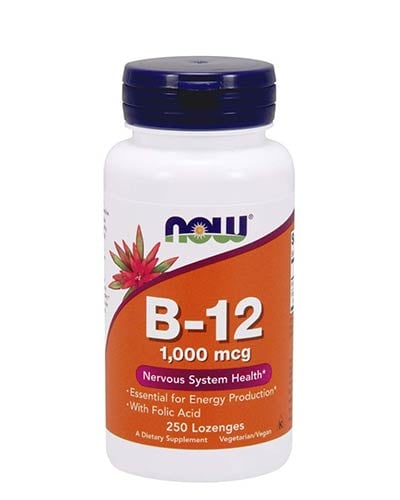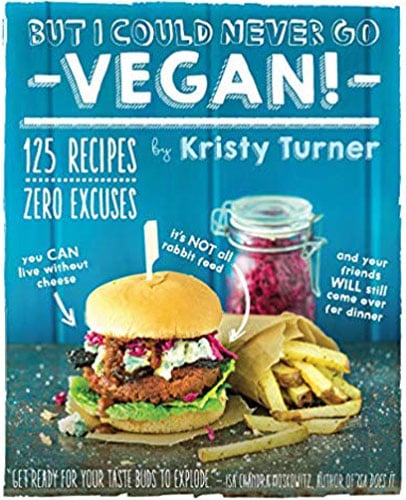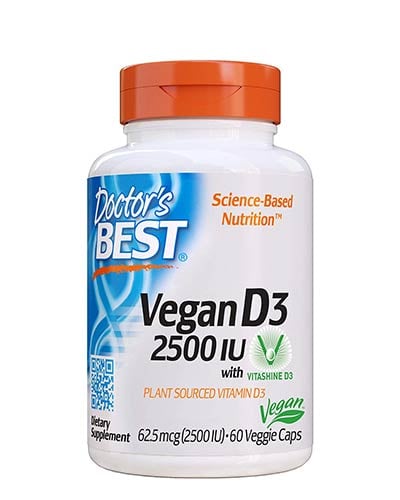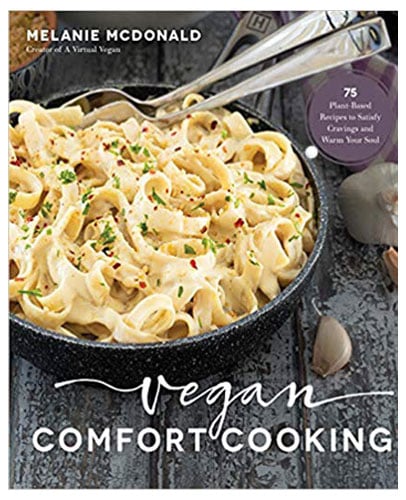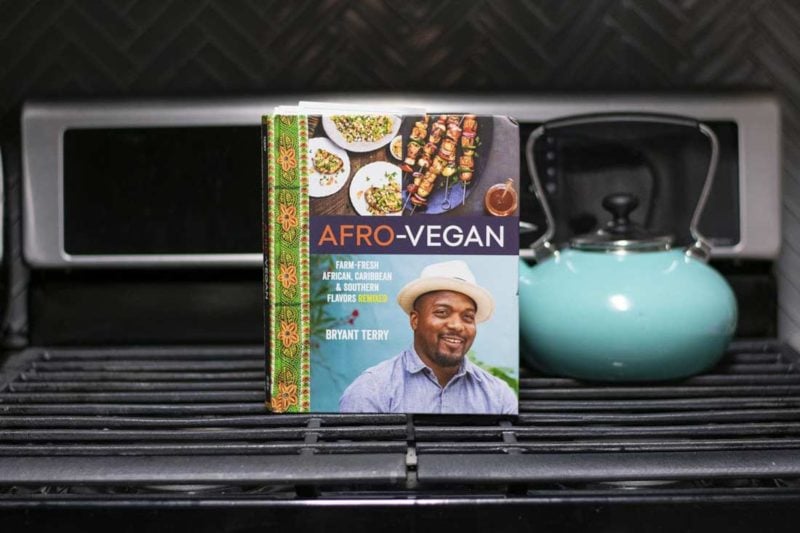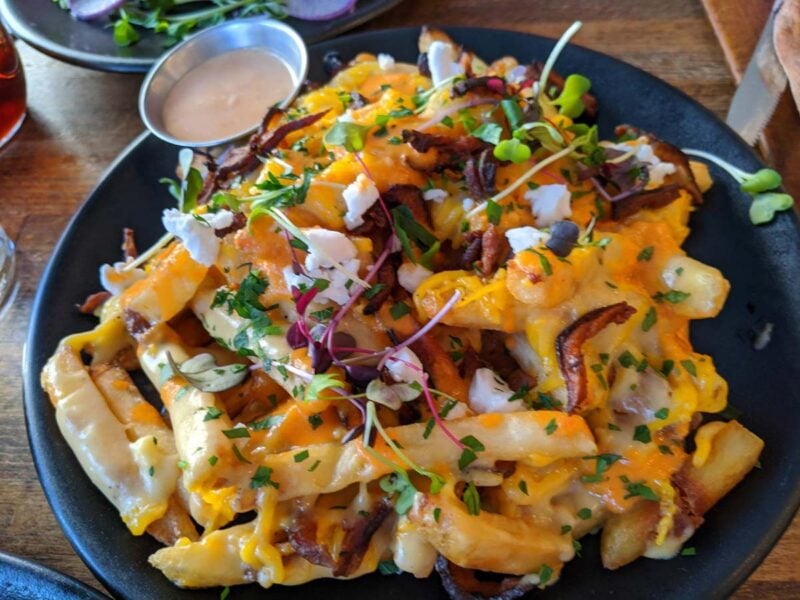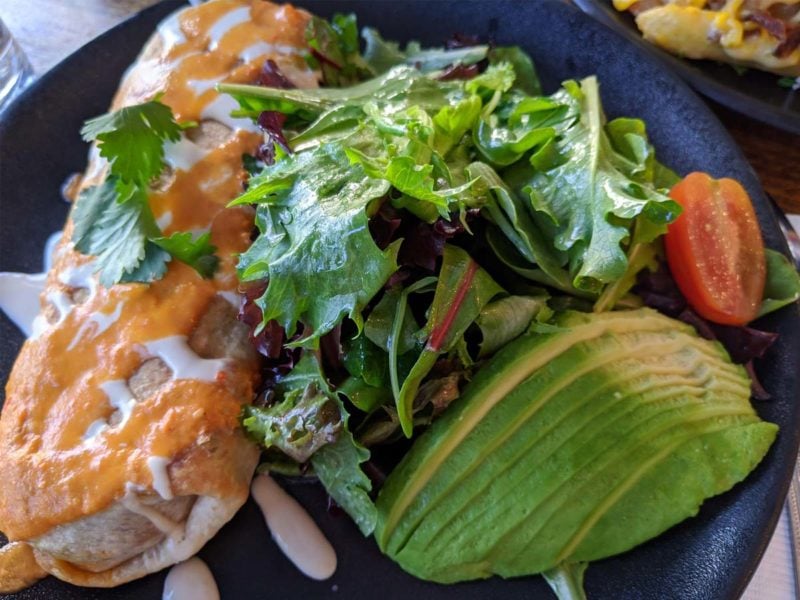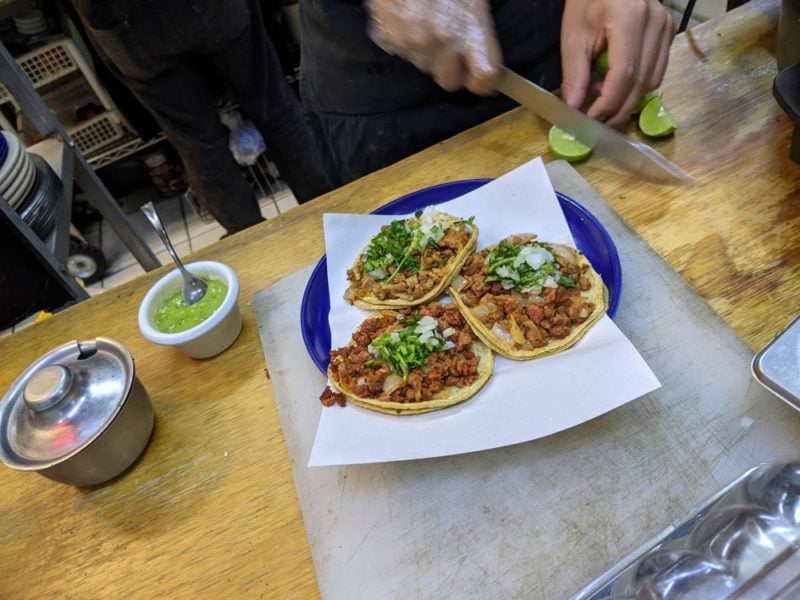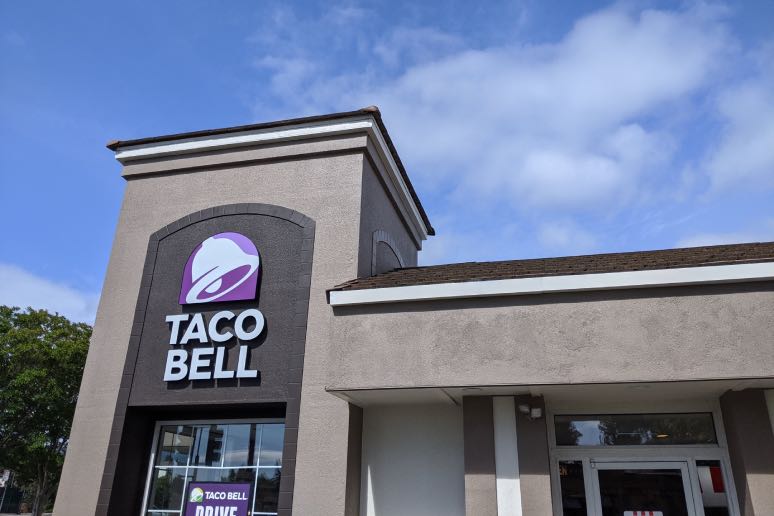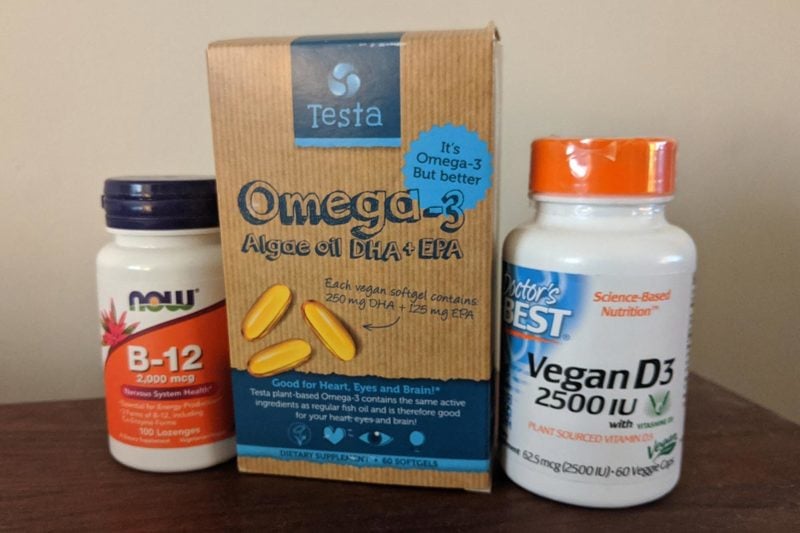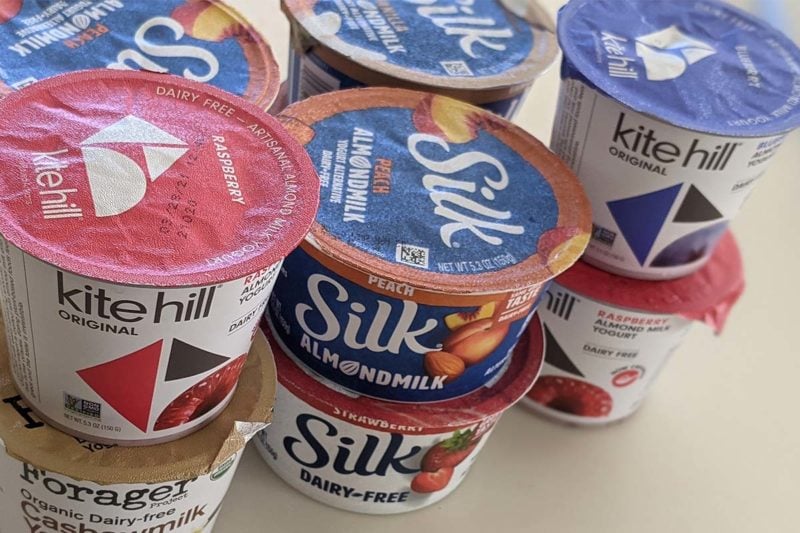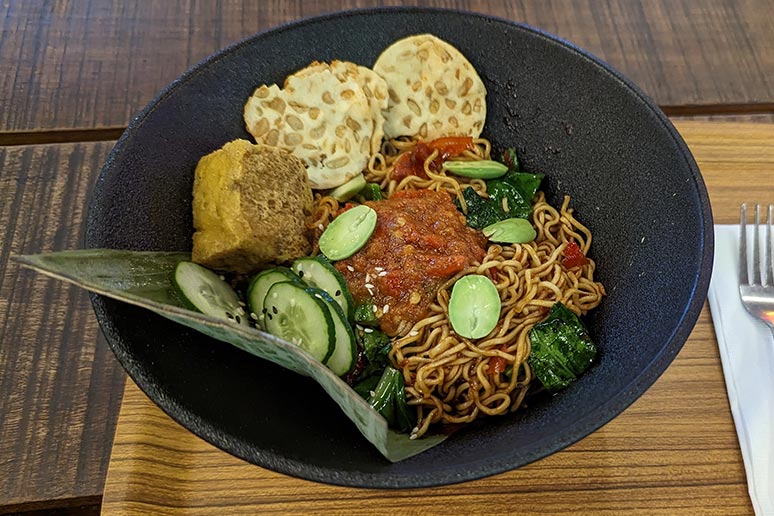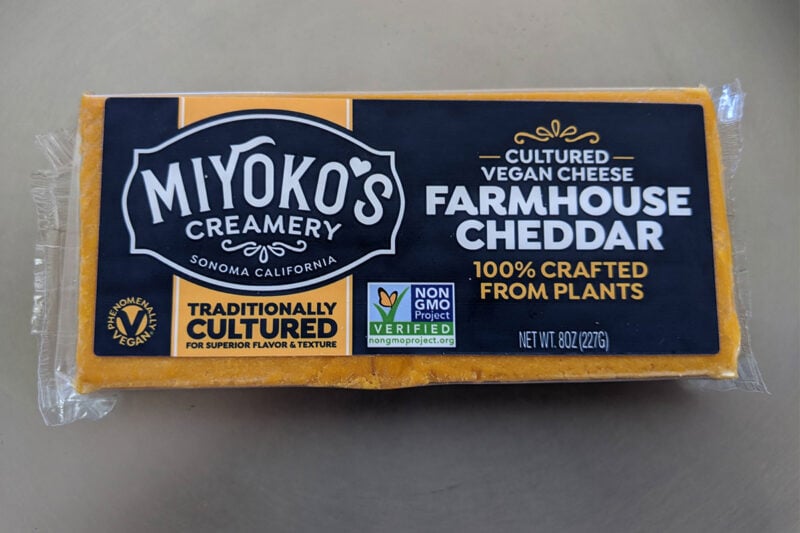HOMEMADE PALM OIL-FREE VEGAN BUTTERY SPREAD
By Bryanna Clark Grogan, author of World Vegan Feast
Featuring Photography by Christina Hoheisel
Special thanks to Mattie at VeganBaking.net for his ground-breaking work on this concept which provided a place to start when developing my own recipe. Mattie also provided a wealth of details about how the ingredients for vegan butter interact.
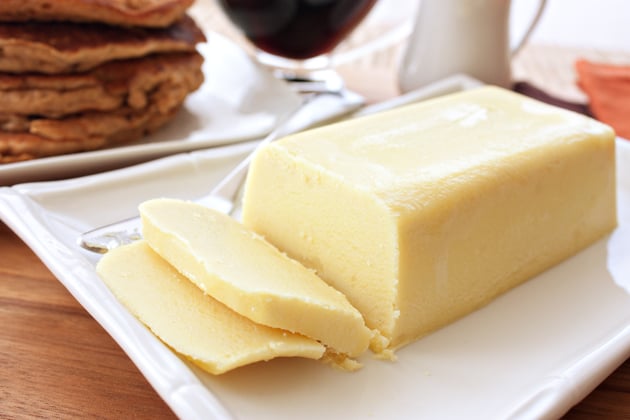
You may wonder why a food writer like me, who advocates very moderate use of fat in the diet, would take the time to develop a full-fat homemade vegan buttery spread. My work here was inspired by a request from a friend for an alternative to vegan margarines utilizing palm oil. After two solid months of working on this recipe, my freezer is chock-full of test results—some great, some terrible. But I ultimately ended up with an easy-to-make, palm oil-free vegan butter recipe with the balance of fats I was seeking. I’m proud to say that my vegan butter has also passed my picky 12-year-old granddaughter’s taste-test, astonished numerous vegan and omnivorous dinner and party guests, and proved itself in the baking department. I am proud to put my name on a homemade product which, as Erik says, is “… a butter recipe capable of destroying your cravings for dairy products.” And I’m thrilled to finally present it to you here on Vegan.com. 
P.S. Before you make the recipe, please also read the supplemental information on my blog. This information will assist you greatly in ensuring that your vegan butter-making efforts yield spectacular results. You’ll additionally learn some vital information about the palm oil industry’s complicity in the killing of orangutans.
P.P.S. One request: Erik has kindly provided me with an online platform larger than my own to share my recipe with the vegan community. But, if you have any questions about the recipe, please don’t bother Erik—contact me. You’re welcome to link to this page or my blog—we encourage sharing—but we request that you do not post the recipe elsewhere. I’m sharing it for no remuneration, so I hope that everyone will respect this simple request and link to this page if you enjoy the recipe. Thank you very much!
***
Some final things to keep in mind before we get to the recipe:
- Double, triple, or quadruple the recipe to save time and effort– Buttah freezes well.
- When sautéing with Buttah use medium heat, or the non-dairy milk solids will burn.
- Use one of the recommended nondairy milks, soy preferred. Other nondairy milks may lack sufficient protein for curdling. Regarding your choice of soy milk, keep in mind that the sugar(s) (simple carbohydrates) in “Original” varieties of soy milk is hardly abundant, and basically replaces the sugar naturally present in cow’s milk. For instance, the amount of sugar(s) in 1 cup of Westsoy Plus Plain unsweetened soy milk is 6 grams. The amount of sugars in 1 cup of dairy milk is 12.35 grams! So please use “original” and not “unsweetened” in this recipe.
- Fair trade organic cocoa butter is preferable and available, though more expensive than non-deodorized cocoa butter.
- See Cooking Tips & Important Info for important notes on the cost of the recipe, details about its ingredients; types of molds and where to buy; comparison chart of solid fats; and information on oil palm cultivation and the threat to orangutans.
- For a low-fat alternative, see my recipe for “Corn Butter” on my blog. It has an update to make it a little richer with the addition of your favorite vegan buttery spread, which I hope will be Buttah!
- I’m not advocating using this spread for everything. I try to bake and cook with liquid oils as much as possible (and in as small quantities as possible) and save Buttah for spreading or using only where a buttery flavor is very important, or to use in place of shortening. Here’s a chart listing the amounts of oil to use in cooking and baking instead of butter (you use less oil than butter). But I have used Buttah successfully in cake icing, biscuits, scones, and pie crust. See comparison nutritional chart of fats & spreads at the end of this article.
No reproduction of the following material permitted.
Bryanna’s Palm Oil-Free Vegan Buttah
© Bryanna Clark Grogan 2014
A delicious trans-fat-free, non-hydrogenated spread, low in saturated fat, to use just as you would butter or margarine. Nut-free, coconut-free, gluten-free; can also be made with soy-free, corn-free, organic and fair trade ingredients. Recipe revised April 16, 2012. Printable recipe here. Yield: 2 ¼ cups
Ingredients:
- ½ cup soy milk, or almond or hemp milk—original, not unsweetened, not flavored
- ½ tsp lemon juice (if allergic to citrus, use unseasoned rice vinegar)
- 1 tsp fine sea salt
- 1 cup canola oil or alternate (click here for alternates)
- 2 tsp liquid soy or sunflower lecithin
- 3.85 oz (109 g) fair trade, organic cocoa butter, preferably deodorized
- ½ tsp guar gum or xanthan gum
- Optional 1/8 tsp turmeric (for brighter yellow color)
Equipment:
- Stick blender. Instead of using a blender, I recommend that you use an immersion/stick blender in a tall, cylindrical container—clean-up is easier and your butter emulsifies better for some reason. I have a cheap little immersion blender and it works just fine.
- Tall container (for mixing your butter.) Most stick blenders come with such a container, or you can use a metal milkshake cup or deep Pyrex measuring pitcher.
- 6 medium-sized silicone cupcake liners (or silicone molds of comparable size in whatever form you desire.) For this feature’s main and final photos, Christina used these molds, which she ordered from Amazon.com. Christina also reported good results with these, which appear in this feature’s next-to-last photograph.
- A digital kitchen scale that shows ounces and grams.
Instructions:
In the blender, mixing bowl or measuring beaker, blend or whisk together the non-dairy milk, lemon juice and salt. Add the oil and lecithin, but don’t stir. Set this aside. (TIP: To measure out the lecithin, oil the teaspoon measure and then use a small silicone spatula to scoop it out of the spoon.)
Have ready 6 medium-sized shiny silicone cupcake liners placed in a 6-cup cupcake pan, or in a shallow baking pan, or 2 freezer-safe containers that will each hold a little over 1 cup. (See Cooking Tips for other molds.)
Chop the cocoa butter into small bits. (Tip: If you slice down in very thin slices with a sharp knife, it will shred, which helps it to melt faster). To melt the cocoa butter, place it in a small heat-proof dish and 1.) melt it in a microwave oven (I timed the melting of the cocoa butter in my microwave and it took 3 minutes at #3 power in a 1200 watt oven); OR 2.) place in a heat-proof dish in the top of a double boiler and melt over simmering water. TIP: I melt mine in the microwave in a microwave-safe 2 qt. batter bowl and use the same bowl for mixing.
Place the heat-proof dish or bowl in a bowl of cold water. Test the cocoa butter in a few minutes to see if it’s cooled off. If you use a food thermometer, it should be no more than 90°F. I simply test it with by dipping in a spoon and testing that with my fingers. The cocoa butter should be liquid and warm, but not hot. This will ensure that the buttah mixture will stay emulsified while cooling. (Thanks to Craig Lee of Baltimore, Maryland for this tip!)
Pour the liquid mixture (milk, oil, etc) into the cooled-off melted cocoa butter and add the guar or xanthan gum. Blend with an immersion/stick blender for a couple of minutes. (Alternately, pour the cooled-off melted cocoa butter into the blender in which have mixed the liquid mixture, add the guar or xanthan gum and blend. I prefer the 1st method because it’s easier to get all of the mixture out of the bowl than out of the blender jar.) When it is thick and creamy, STOP! It is emulsified.

Immediately distribute the mixture evenly into the 6 silicone cupcake liners, or whatever molds you are using. Place the molds in the freezer for about one hour. Do not omit this step because you want the mixture to solidify quickly.
After one hour, the Buttah should be solid and can be released from the liners or container, wrapped or placed in a covered butter dish, and refrigerated. It will keep refrigerated for about 3 weeks, or you can keep it well-wrapped and frozen for several months. Refrigerated, it will stay solid at room temperature after freezing and thawing for some time, so it’s safe to put it on the dinner table, but it is best kept refrigerated most of the time after thawing.

NOTE: If for some reason the emulsified mixture “breaks” (gets liquid-y) (which would probably be caused by the melted cocoa butter being too hot), its okay—you can save it; read on.
Immediately distribute the mixture evenly into the 6 silicone cupcake liners, or whatever molds you are using. Place the molds in the freezer for about 1 hour. Do not omit this step because you want the mixture to solidify before the fats and liquids can separate. If you have a more liquid-y mixture to start with, stir each mold or container of Buttah mixture briefly with a mini-whisk before placing in the freezer. Then whisk it again every 10 minutes or so for about 30 minutes, or until it starts to firm up and look creamier.
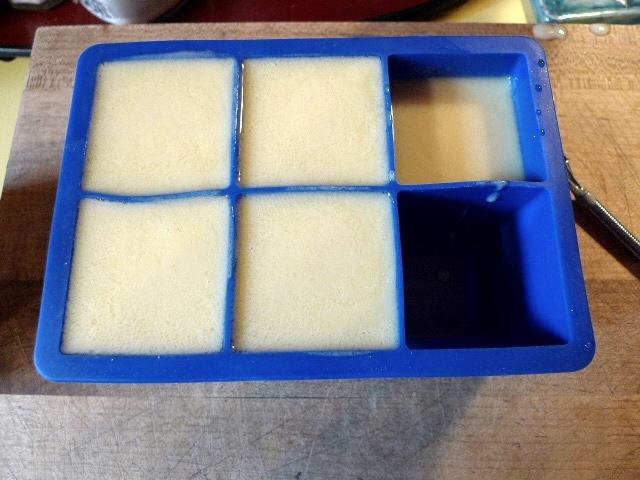
Note: Food grade organic cocoa butter, lecithin, and oils are often available online from organic soap and cosmetic suppliers. Some online suppliers are listed here.
Using Living Cookbook software:


